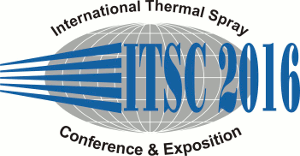
|
4697 |
|
Wednesday, May 11, 2016, Room 3H + 3I + 3J 11:20 AM Power Generation - Fuel Cell I |
|
Combining atmospheric plasma spraying (APS) and plasma spray-physical vapor deposition (PS-PVD) to manufacture metal supported solid oxide fuel cell assemblies |
|
Diana Marcano* / Forschungszentrum Jülich GmbH, Germany Robert Vaßen/ Forschungszentrum Jülich GmbH, Germany Georg Mauer/ Forschungszentrum Jülich GmbH, Germany Andre Weber/ Forschungszentrum Jülich GmbH, Germany |
|
Thermal Plasma spraying is a ceramic powder processing method which is used for the manufacture of dense and porous structures. In the present work, a metal supported SOFC was fabricated by means of plasma spray. As support, a Fe-Cr porous structure was used. The anode and electrolyte functional layers were applied by means of atmospheric plasma spray (APS) and plasma spray-physical vapor deposition (PS-PVD), respectively. A standard Ni/YSZ (coat mix) powder was used for the anode. The cathode layer consisted of a LSCF non-sintered paste. The development of a thin, dense, gas-tight electrolyte was the key issue of this work. Two different fully stabilized YSZ powders were used: a fused&-crushed and an agglomerated&- sintered feedstock. Parameters, such as powder feed rate and carrier gas flux were optimized. Coating of 50x50 mm samples was performed and analysis of bending, microstructure, phases, and gas-tightness were carried out as a function of processing conditions. As a result, an APS partially reduced anode coating with 9% porosity and a gas-tight 30 µm electrolyte layer were obtained. Such an assembly was air-tight and delivered a cell with an acceptable open circuit voltage (OCV ) and an excellent performance of 1 A/cm2 at 800°C and 0.7 V. |